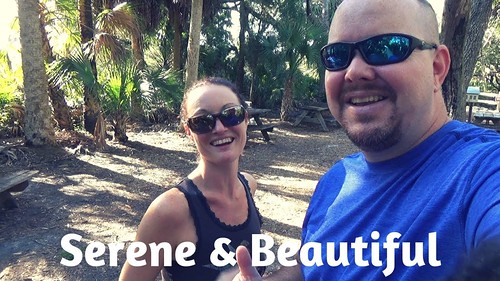Syntype series of S. laevis Caullery, 944 consists of two various species primarily based
Syntype series of S. laevis Caullery, 944 consists of two unique species depending on their ventrocaudal shields: 3 syntypes have an hirsute integument with abundant sediment particles firmly attached, as well as the shield basal layer is soft, porous, and another one particular includes a shield having a stiff basal layer. So that you can redefine the species delineation mainly because these two shield patterns differ PubMed ID:https://www.ncbi.nlm.nih.gov/pubmed/11836068 a lectotype has been chosen (ICZN 999, Art. 74.), the term has been introduced inside the materials section and inside the description (ICZN 999, Art. 74.7.), described and illustrated (ICZN 999, Art. 74.7.two) as well as the two other specimens are Epipinoresinol methyl ether site regarded as paralectotypes (ICZN 999, Recomm. 74F). This proposal has been made to restrict the usage of this species name to those specimens getting hirsute shields with abundant, firmly attached sediment particles (ICZN 999, Art. 74.7.three). The selected specimen (lectotype) corresponds towards the originally illustrated specimen (ICZN 999, Recomm. 74B). Yet another syntype of S. laevis (ZMA 49) is broken, most physique papillae had been eroded, most shield fascicles chaetae had been broken, its introvert is invaginated, and itsKelly Sendall Sergio I. SalazarVallejo ZooKeys 286: four (203)papillae are arranged in transverse groups; the shield includes a stiff layer, with concentric lines and ribs, showing a banded pigmentation. It resembles S. spinosa and will not belong to P. laevis. On the other hand, from the ten syntypes of S. laevis var. minor, five (ZMA 528), are very tiny specimens probably of C. laevis, but their little size complicates their positive identification; the other five syntypes (ZMA 504), are driedout, and their identification is much more  problematic. Consequently, S. laevis var. minor should be regarded as indeterminable. Caulleryaspis laevis (Caullery, 944) comb. n. differs in two main characters from C. gudmundssoni sp. n.: the relative development with the anterior shield depression and the relative development of peg chaetae. In P. laevis the anterior depression is shallow and peg chaetae usually are not well created, generating them tough to be detected, whereas in P. gudmundssoni the anterior depression is deep and peg chaetae are extremely robust, being quickly noticed in the surrounding shield surface. Distribution. Andaman Sea to Southeastern Australia, 3947 m depth. Kastoro et al. (989) consider this really is an extremely widespread estuarine species in East Java, in 0.30.0 m, and salinities of 29.34.0 . Genus Petersenaspis gen. n. urn:lsid:zoobank.org:act:7AEC3E5B68D457AAD7508A956F5B736 http:speciesid.netwikiPetersenaspis Form species. Sternaspis capillata Nonato, 966. Diagnosis. Sternaspids with introvert hooks subdistally expanded. Preshield area with eight segments. Ventrocaudal shield stiff with feebly created ribs, and no concentric lines. Remarks. Petersenaspis gen. n. and Sternaspis have stiff shields, whereas Caulleryaspis has soft shields. Nevertheless, Petersenaspis differs from Sternaspis due to the fact its introvert hooks are subistally expanded, you’ll find 8 segments inside the preshield area, and also the shield has deeply created ribs but no concentric lines, whereas in Sternaspis introvert hooks are tapered, there are actually 7 segments in the preshield region, along with the shield has well created ribs, usually with concentric lines. As stated above, Petersenaspis gen. n. includes, in addition to the sort species, P. capillata (Nonato, 966) comb. n from Central and Southern Brazil, P. palpallatoci sp. n. in the Philippine Islands, and one more species which can be characterized bel.
problematic. Consequently, S. laevis var. minor should be regarded as indeterminable. Caulleryaspis laevis (Caullery, 944) comb. n. differs in two main characters from C. gudmundssoni sp. n.: the relative development with the anterior shield depression and the relative development of peg chaetae. In P. laevis the anterior depression is shallow and peg chaetae usually are not well created, generating them tough to be detected, whereas in P. gudmundssoni the anterior depression is deep and peg chaetae are extremely robust, being quickly noticed in the surrounding shield surface. Distribution. Andaman Sea to Southeastern Australia, 3947 m depth. Kastoro et al. (989) consider this really is an extremely widespread estuarine species in East Java, in 0.30.0 m, and salinities of 29.34.0 . Genus Petersenaspis gen. n. urn:lsid:zoobank.org:act:7AEC3E5B68D457AAD7508A956F5B736 http:speciesid.netwikiPetersenaspis Form species. Sternaspis capillata Nonato, 966. Diagnosis. Sternaspids with introvert hooks subdistally expanded. Preshield area with eight segments. Ventrocaudal shield stiff with feebly created ribs, and no concentric lines. Remarks. Petersenaspis gen. n. and Sternaspis have stiff shields, whereas Caulleryaspis has soft shields. Nevertheless, Petersenaspis differs from Sternaspis due to the fact its introvert hooks are subistally expanded, you’ll find 8 segments inside the preshield area, and also the shield has deeply created ribs but no concentric lines, whereas in Sternaspis introvert hooks are tapered, there are actually 7 segments in the preshield region, along with the shield has well created ribs, usually with concentric lines. As stated above, Petersenaspis gen. n. includes, in addition to the sort species, P. capillata (Nonato, 966) comb. n from Central and Southern Brazil, P. palpallatoci sp. n. in the Philippine Islands, and one more species which can be characterized bel.
